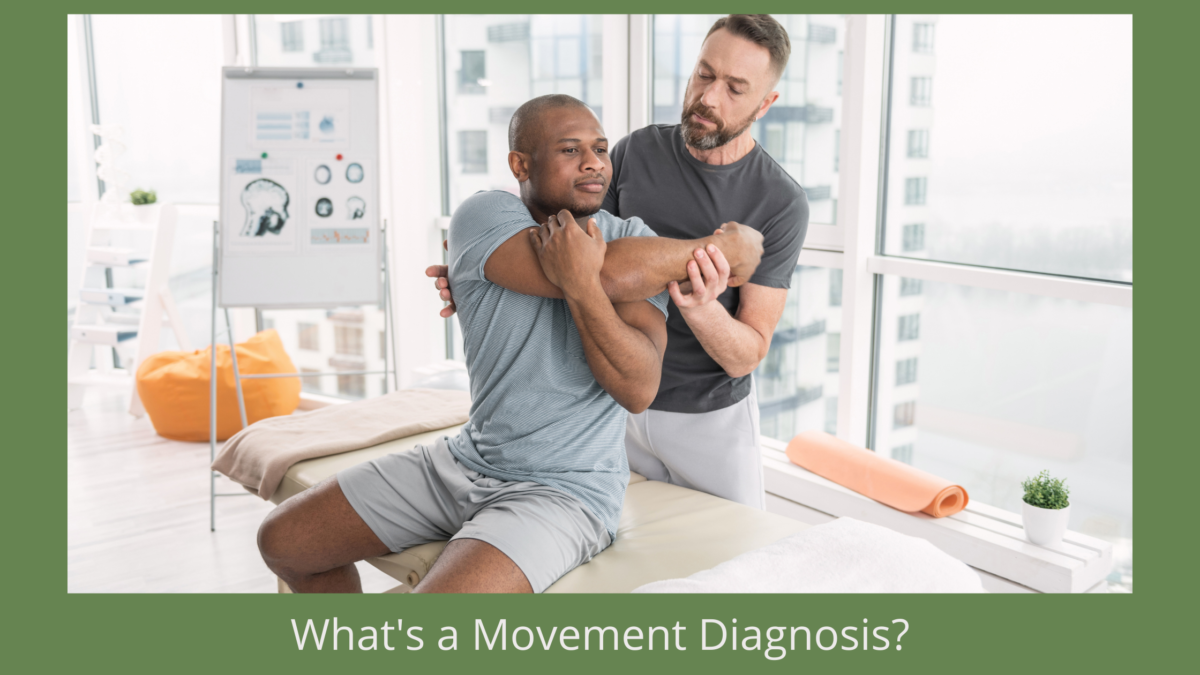Medical diagnoses don’t need much of an introduction. They’re what you get from your doctor when you’re sick. Examples would be influenza, diabetes, or hypertension. They describe the underlying problem that is causing your symptoms.
When people feel sick, they know they need to go to the doctor and find out what’s going on to get treated. We should treat movement the same way. If you’re having pain when you move, can’t do things you used to be able to – like get on and off the floor easily, or can’t do things you want to do – like go for a bike ride or pick up a grandchild – then you need to get a movement diagnosis.
A movement diagnosis does the same thing as a medical diagnosis; it describes what’s causing your difficulty with movement. Some examples would be difficulty standing from a chair secondary to decreased force production, scapular down rotation syndrome, or lower crossed syndrome.
Diagnoses set the roadmap for treatment, so getting them right is crucial. Human movement is complex and is influenced by more than just your muscles and joints. According to the American Physical Therapy Association, movement is impacted by the following systems:
– Endocrine
– Nervous
– Cardiovascular
– Pulmonary
– Integumentary
– Musculoskeletal
Because of the complexity and interplay between these components of the movement system, getting a movement diagnosis correct is often very difficult. Physical therapists are experts in human movement with doctoral level training. Your physical therapist should be your first stop for movement issues. Not only can a physical therapist provide an accurate movement diagnosis, they will also design a treatment plan to correct the underlying issues and help get you moving well again. Better movement yields better health in all of the body systems.
DON’T FORGET THAT IN TEXAS, IT IS NOW POSSIBLE TO SEE A PHYSICAL THERAPIST FOR AN EVALUATION AND INITIAL TREATMENT SESSIONS WITHOUT A PRESCRIPTION OR REFERRAL.
You can see your physical therapist directly as the most appropriate health care practitioner to help to determine whether or not your situation would benefit from movement-based care. Why not check in now to get your movement diagnosis, as well as a plan to help you to move better? Your health is worth it!
References:

